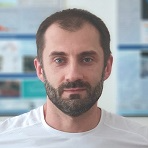Geological Mapping: Laser Scanning and Digital Photogrammetry
A special issue of Applied Sciences (ISSN 2076-3417). This special issue belongs to the section "Earth Sciences".
Deadline for manuscript submissions: closed (20 September 2023) | Viewed by 3085
Special Issue Editors
Interests: digital photogrammetry; terrestrial and airborne laser scanning; remote sensing; geohazards; geodesy and engineering surveying; mine surveying; caves; structure from motion; remotely piloted aircrafts systems
Interests: geohazards; geodesy; 3D mapping; engineering geodesy; spatial analysis
Special Issues, Collections and Topics in MDPI journals
Interests: digital photogrammetry; terrestrial and airborne laser scanning; remote sensing; UAS; caves; geohazards
Special Issue Information
Dear Colleagues,
Research on the complex morphology, genesis, and changes of geological objects is impossible without highly accurate geodetic measurements, which provide detailed surveys, maps, sections, and spatial models. Progressive noncontact technologies such as digital photogrammetry or laser scanning methods – terrestrial and aerial – create an innovative platform for the research of these objects. This Special Issue focuses on spatial modeling of the surface geomorphology and underground features using modern technologies to obtain information about mineral units and their structure – rock and mineral types, their thickness, lithological deposits, faults, folds, and fractures – and thus interpret information corresponding to their origination over time.
Dr. Katarína Pukanská
Dr. Ludovit Kovanic
Dr. Karol Bartoš
Guest Editors
Manuscript Submission Information
Manuscripts should be submitted online at www.mdpi.com by registering and logging in to this website. Once you are registered, click here to go to the submission form. Manuscripts can be submitted until the deadline. All submissions that pass pre-check are peer-reviewed. Accepted papers will be published continuously in the journal (as soon as accepted) and will be listed together on the special issue website. Research articles, review articles as well as short communications are invited. For planned papers, a title and short abstract (about 100 words) can be sent to the Editorial Office for announcement on this website.
Submitted manuscripts should not have been published previously, nor be under consideration for publication elsewhere (except conference proceedings papers). All manuscripts are thoroughly refereed through a single-blind peer-review process. A guide for authors and other relevant information for submission of manuscripts is available on the Instructions for Authors page. Applied Sciences is an international peer-reviewed open access semimonthly journal published by MDPI.
Please visit the Instructions for Authors page before submitting a manuscript. The Article Processing Charge (APC) for publication in this open access journal is 2400 CHF (Swiss Francs). Submitted papers should be well formatted and use good English. Authors may use MDPI's English editing service prior to publication or during author revisions.
Keywords
- geomorphology
- digital photogrammetry
- terrestrial laser scanning
- LIDAR
- point cloud processing
- DTM
- surface modeling







